A Method for Assessing the Degradation of PVC-Insulated Low-Voltage Distribution Cables Exposed to Short-Term Cyclic Aging
Abstract
:1. Introduction
2. Materials and Methods
2.1. Sample Types
- NYCWY kV mm2, manufactured by Cablel Hellenic Cables Group. The structure from inside to outside: 1. copper conductors, 2. PVC core insulation, 3. filling material, 4. copper wire and tape screen, and 5. PVC jacket. The cable structure of the NYCWY type can be seen in Figure 1. The maximum conductor operating temperature of NYCWY is 70 °C.
- SZRMtKVM kV mm2, manufactured by Pyrismian MKM Kft. The structure from inside to outside: 1. copper conductors, 2. PVC core insulation, 3. PVC tape belt, 4. steel armor, and 5. PVC jacket. The cable structure of SZRMtKVM can be seen in Figure 2. According to the datasheet, the maximum conductor operating temperature of SZRMtKVM is 70 °C.
2.2. Aging
- Setting the climate chamber temperature to 110 °C.
- Placing the samples inside the climate chamber once the temperature reached the setpoint value.
- Keeping the samples inside the climate chamber for accelerated thermal aging.
- Removing the samples from the climate chamber.
- Placing the samples at room temperature for pre-conditioning for 24 h.
- Performing the dielectric measurements.
2.3. Measurement Techniques
2.3.1. Dielectric Response Measurement
- Tan Measurement
- Extended voltage response (EVR)
2.3.2. Mechanical Measurement
2.4. Regression Analysis
3. Results
3.1. SZRMtKVM-Type Cable
3.1.1. Results of Tan Measurement
3.1.2. Results of EVR Measurement
3.1.3. Shore D Hardness
3.2. NYCWY-Type Cable
3.2.1. Results of Tan Measurement
3.2.2. Results of EVR Measurement
3.2.3. Shore D Hardness
4. Discussion
4.1. Tan Measurement
- 50 Hz.
- 100 Hz.
- 2 kHz.
- 5 kHz.
- 500 kHz.
4.2. EVR Measurement
4.3. Shore D Hardness
4.4. Correlation between Electrical and Mechanical Quantities
- For SZRMtKVM type:
- -
- The highest correlation between the mechanical and electrical measurements was observed at a frequency of 2 kHz. Therefore, it can be concluded that 2 kHz can be utilized as an aging marker for the FDS technique.
- -
- The measurement at a 1-s discharging time exhibited a strong correlation with the hardness measurement. Therefore, it can also be utilized as an aging marker in the TDS technique.
- -
- Overall, in the case of SZRMtKVM, the FDS technique demonstrated a slightly better correlation with aging compared to the TDS technique at frequency points of 100 Hz, 2 kHz, and 5 kHz.
- For NYCWY type:
- -
- The frequency domain spectroscopy (FDS) technique exhibited a weak correlation with hardness, with the highest coefficient of determination () of 0.5974 observed at a frequency of 100 Hz.
- -
- The time domain spectroscopy (TDS) technique demonstrated a relatively strong correlation, with coefficient of determination () values above 0.8 for both and .
5. Conclusions
Author Contributions
Funding
Institutional Review Board Statement
Informed Consent Statement
Data Availability Statement
Conflicts of Interest
Abbreviations
| CM | Condition Monitoring |
| LV | Low Voltage |
| PVC | Polyvinyl Chloride |
| XLPE | Cross-linked Polyethylene |
| CSPE | Chlorosulfonated Polyethylene |
| EPR | Ethylene Propylene Rubber |
| EaB | Elongation at Break |
| EVR | Extended Voltage Response Measurement |
| VR | Voltage Response Measurement |
| TDS | Time Domain Spectroscopy |
| FDS | Frequency Domain Spectroscopy |
| DRM | Dielectric Response Measurement |
References
- Mohajan, H. Greenhouse gas emissions increase global warming. Int. J. Econ. Political Integr. 2011, 1, 21–34. [Google Scholar]
- Lashof, D.A.; Ahuja, D.R. Relative contributions of greenhouse gas emissions to global warming. Nature 1990, 344, 529–531. [Google Scholar] [CrossRef]
- Holechek, J.L.; Geli, H.M.E.; Sawalhah, M.N.; Valdez, R. A Global Assessment: Can Renewable Energy Replace Fossil Fuels by 2050? Sustainability 2022, 14, 4792. [Google Scholar] [CrossRef]
- Chen, B.; Xiong, R.; Li, H.; Sun, Q.; Yang, J. Pathways for sustainable energy transition. J. Clean. Prod. 2019, 228, 1564–1571. [Google Scholar] [CrossRef]
- Bouffard, F.; Kirschen, D.S. Centralised and distributed electricity systems. Energy Policy 2008, 36, 4504–4508. [Google Scholar] [CrossRef]
- Mehigan, L.; Deane, J.; Gallachóir, B.; Bertsch, V. A review of the role of distributed generation (DG) in future electricity systems. Energy 2018, 163, 822–836. [Google Scholar] [CrossRef]
- Worighi, I.; Maach, A.; Hafid, A.; Hegazy, O.; Van Mierlo, J. Integrating renewable energy in smart grid system: Architecture, virtualization and analysis. Sustain. Energy Grids Netw. 2019, 18, 100226. [Google Scholar] [CrossRef]
- Istók, R.; Kádár, P. Active and reactive power of solar electric vehicle chargers system. Pollack Period. 2023, 18, 95–100. [Google Scholar] [CrossRef]
- Ourahou, M.; Ayrir, W.; EL Hassouni, B.; Haddi, A. Review on smart grid control and reliability in presence of renewable energies: Challenges and prospects. Math. Comput. Simul. 2020, 167, 19–31. [Google Scholar] [CrossRef]
- Wang, J.; Zhou, N.; Ran, Y.; Wang, Q. Optimal Operation of Active Distribution Network Involving the Unbalance and Harmonic Compensation of Converter. IEEE Trans. Smart Grid 2019, 10, 5360–5373. [Google Scholar] [CrossRef]
- Atrigna, M.; Buonanno, A.; Carli, R.; Cavone, G.; Scarabaggio, P.; Valenti, M.; Graditi, G.; Dotoli, M. A Machine Learning Approach to Fault Prediction of Power Distribution Grids under Heatwaves. IEEE Trans. Ind. Appl. 2023, 59, 4835–4845. [Google Scholar] [CrossRef]
- Pompili, M.; Calcara, L.; D’Orazio, L.; Ricci, D.; Derviškadić, A.; He, H. Joints defectiveness of MV underground cable and the effects on the distribution system. Electr. Power Syst. Res. 2021, 192, 107004. [Google Scholar] [CrossRef]
- Iweh, C.D.; Gyamfi, S.; Tanyi, E.; Effah-Donyina, E. Distributed Generation and Renewable Energy Integration into the Grid: Prerequisites, Push Factors, Practical Options, Issues and Merits. Energies 2021, 14, 5375. [Google Scholar] [CrossRef]
- Celina, M.; Gillen, K.; Assink, R. Accelerated aging and lifetime prediction: Review of non-Arrhenius behaviour due to two competing processes. Polym. Degrad. Stab. 2005, 90, 395–404. [Google Scholar] [CrossRef]
- Celina, M.C. Review of polymer oxidation and its relationship with materials performance and lifetime prediction. Polym. Degrad. Stab. 2013, 98, 2419–2429. [Google Scholar] [CrossRef]
- Zhou, C.; Yi, H.; Dong, X. Review of recent research towards power cable life cycle management. High Volt. 2017, 2, 179–187. [Google Scholar] [CrossRef]
- Choudhary, M.; Shafiq, M.; Kiitam, I.; Hussain, A.; Palu, I.; Taklaja, P. A Review of Aging Models for Electrical Insulation in Power Cables. Energies 2022, 15, 3408. [Google Scholar] [CrossRef]
- Densley, J. Ageing mechanisms and diagnostics for power cables—An overview. IEEE Electr. Insul. Mag. 2001, 17, 14–22. [Google Scholar] [CrossRef]
- Hancox, N.L. Thermal effects on polymer matrix composites: Part 1. Thermal cycling. Mater. Des. 1998, 19, 85–91. [Google Scholar] [CrossRef]
- Jakubowicz, I.; Yarahmadi, N.; Gevert, T. Effects of accelerated and natural ageing on plasticized polyvinyl chloride (PVC). Polym. Degrad. Stab. 1999, 66, 415–421. [Google Scholar] [CrossRef]
- Quennehen, P.; Royaud, I.; Seytre, G.; Gain, O.; Rain, P.; Espilit, T.; François, S. Determination of the aging mechanism of single core cables with PVC insulation. Polym. Degrad. Stab. 2015, 119, 96–104. [Google Scholar] [CrossRef]
- Ekelund, M.; Edin, H.; Gedde, U. Long-term performance of poly(vinyl chloride) cables. Part 1: Mechanical and electrical performances. Polym. Degrad. Stab. 2007, 92, 617–629. [Google Scholar] [CrossRef]
- Wilson, A.S. Plasticisers: Selection, Applications and Implications; iSmithers Rapra Publishing: Shrewsbury, UK, 1996; Volume 88. [Google Scholar]
- Gumargalieva, K.; Ivanov, V.; Zaikov, G.; Moiseev, J.V.; Pokholok, T. Problems of ageing and stabilization of poly (vinyl chloride). Polym. Degrad. Stab. 1996, 52, 73–79. [Google Scholar] [CrossRef]
- You, S.; Segerberg, H. Integration of 100% micro-distributed energy resources in the low voltage distribution network: A Danish case study. Appl. Therm. Eng. 2014, 71, 797–808. [Google Scholar] [CrossRef]
- Muniz, P.R.; Teixeira, J.L.; Santos, N.Q.; Magioni, P.L.Q.; Cani, S.P.N.; Fardin, J.F. Prospects of life estimation of low voltage electrical cables insulated by PVC by emissivity measurement. IEEE Trans. Dielectr. Electr. Insul. 2017, 24, 3951–3958. [Google Scholar] [CrossRef]
- Babrauskas, V. Mechanisms and modes for ignition of low-voltage PVC wires, cables, and cords. In Proceedings of the Fire and Materials Conference, San Francisco, CA, USA, 31 January–1 February 2005; pp. 291–309. [Google Scholar]
- Kruizinga, B.; Wouters, P.; Steennis, E. Comparison of polymeric insulation materials on failure development in low-voltage underground power cables. In Proceedings of the 2016 IEEE Electrical Insulation Conference (EIC), Montreal, QC, Canada, 19–22 June 2016; IEEE: Piscataway, NJ, USA, 2016; pp. 444–447. [Google Scholar]
- Buhari, M.; Levi, V.; Kapetanaki, A. Cable Replacement Considering Optimal Wind Integration and Network Reconfiguration. IEEE Trans. Smart Grid 2018, 9, 5752–5763. [Google Scholar] [CrossRef]
- Kruizinga, B.; Wouters, P.A.A.F.; Steennis, E.F. Fault development upon water ingress in damaged low voltage underground power cables with polymer insulation. IEEE Trans. Dielectr. Electr. Insul. 2017, 24, 808–816. [Google Scholar] [CrossRef]
- Ringsberg, J.W.; Dieng, L.; Li, Z.; Hagman, I. Characterization of the Mechanical Properties of Low Stiffness Marine Power Cables through Tension, Bending, Torsion, and Fatigue Testing. J. Mar. Sci. Eng. 2023, 11, 1791. [Google Scholar] [CrossRef]
- Verardi, L.; Fabiani, D.; Montanari, G.C. Electrical aging markers for EPR-based low-voltage cable insulation wiring of nuclear power plants. Radiat. Phys. Chem. 2014, 94, 166–170. [Google Scholar] [CrossRef]
- Bowler, N.; Liu, S. Aging mechanisms and monitoring of cable polymers. Int. J. Progn. Health Manag. 2015, 6. [Google Scholar] [CrossRef]
- Sriraman, A.; Bowler, N.; Glass, S.; Fifield, L.S. Dielectric and Mechanical Behavior of Thermally Aged EPR/CPE Cable Materials. In Proceedings of the 2018 IEEE Conference on Electrical Insulation and Dielectric Phenomena (CEIDP), Cancun, Mexico, 21–24 October 2018; pp. 598–601. [Google Scholar] [CrossRef]
- Fabiani, D.; Suraci, S.V. Broadband Dielectric Spectroscopy: A Viable Technique for Aging Assessment of Low-Voltage Cable Insulation Used in Nuclear Power Plants. Polymers 2021, 13, 494. [Google Scholar] [CrossRef] [PubMed]
- Mustafa, E.; Afia, R.S.; Tamus, Z.Á. Dielectric loss and extended voltage response measurements for low-voltage power cables used in nuclear power plant: Potential methods for aging detection due to thermal stress. Electr. Eng. 2021, 103, 899–908. [Google Scholar] [CrossRef]
- Bal, S.; Tamus, Z.A. Investigation of the Structural Dependence of the Cyclical Thermal Aging of Low-Voltage PVC-Insulated Cables. Symmetry 2023, 15, 1186. [Google Scholar] [CrossRef]
- Csányi, G.M.; Bal, S.; Tamus, Z.A. Dielectric Measurement Based Deducted Quantities to Track Repetitive, Short-Term Thermal Aging of Polyvinyl Chloride (PVC) Cable Insulation. Polymers 2020, 12, 2809. [Google Scholar] [CrossRef] [PubMed]
- Paun, C.; Gavrila, D.E.; Paltanea, V.M.; Stoica, V.; Paltanea, G.; Nemoianu, I.V.; Ionescu, O.; Pistritu, F. Study on the Behavior of Low-Voltage Cable Insulation Subjected to Thermal Cycle Treatment. Sci. Bull. Electr. Eng. Fac. 2023, 23, 34–39. [Google Scholar] [CrossRef]
- IEC 60502-1; Power Cables with Extruded Insulation and Their Accessories for Rated Voltages from 1 kV (Um = 1.2 kV) Up to 30 kV (Um = 36 kV)—Part 1: Cables for Rated Voltages of 1 kV (Um = 1.2 kV) and 3 kV (Um = 3.6 kV). International Electrotechnical Commision (IEC): Geneva, Switzerland, 2004.
- Zaengl, W. Dielectric spectroscopy in time and frequency domain for HV power equipment. I. Theoretical considerations. IEEE Electr. Insul. Mag. 2003, 19, 5–19. [Google Scholar] [CrossRef]
- Bal, S.; Tamus, Z.A. Investigation of Effects of Thermal Ageing on Dielectric Properties of Low Voltage Cable Samples by using Dielectric Response Analyzer. In Proceedings of the 2022 International Conference on Diagnostics in Electrical Engineering (Diagnostika), Pilsen, Czech Republic, 6–8 September 2022; pp. 1–6. [Google Scholar] [CrossRef]
- Fofana, I.; Hadjadj, Y. Electrical-Based Diagnostic Techniques for Assessing Insulation Condition in Aged Transformers. Energies 2016, 9, 679. [Google Scholar] [CrossRef]
- Zhang, T.; Mandala, A.T.; Zhong, T.; Zhang, N.; Jiang, S. Identification of extended Debye model parameters for oil-paper insulation based on voltage response characteristic. Electr. Eng. 2022, 104, 2379–2387. [Google Scholar] [CrossRef]
- Mustafa, E.; Afia, R.S.; Tamus, Z.Á. Condition assessment of low voltage photovoltaic DC cables under thermal stress using non-destructive electrical techniques. Trans. Electr. Electron. Mater. 2020, 21, 503–512. [Google Scholar] [CrossRef]
- Bal, S.; Tamus, Z.A. Investigation of Effects of Short-term Thermal Stress on PVC Insulated Low Voltage Distribution Cables. Period. Polytech. Electr. Eng. Comput. Sci. 2021, 65, 167–173. [Google Scholar] [CrossRef]
- Tamus, Z.; Berta, I. Application of voltage response measurement on low voltage cables. In Proceedings of the 2009 IEEE Electrical Insulation Conference, Montreal, QC, Canada, 31 May 2009–3 June 2009; IEEE: Piscataway, NJ, USA, 2009; pp. 444–447. [Google Scholar]
- Bal, S.; Tamus, Z.A. Analyzing the Effect of Thermal Stress on Dielectric Parameters of PVC Insulated Low Voltage Cable Sample. In Proceedings of the 2022 IEEE 5th International Conference and Workshop Óbuda on Electrical and Power Engineering (CANDO-EPE), Budapest, Hungary, 21–22 November 2022; IEEE: Piscataway, NJ, USA, 2022; pp. 000067–000072. [Google Scholar]
- ASTM D2240-05; Standard Test Method for Rubber Property: Durometer Hardness. ASTM West Conshohocken: Conshohocken, PA, USA, 2010.
- Chatterjee, S.; Hadi, A.S. Regression Analysis by Example; John Wiley & Sons: Hoboken, NJ, USA, 2013. [Google Scholar]
- Gogtay, N.; Deshpande, S.; Thatte, U. Principles of regression analysis. J. Assoc. Physicians India 2017, 65, 48–52. [Google Scholar] [PubMed]
- Tamus, Z.Á. Regression analysis to evaluate the reliability of insulation diagnostic methods. J. Electrost. 2013, 71, 564–567. [Google Scholar] [CrossRef]
- Linde, E.; Gedde, U.W. Plasticizer migration from PVC cable insulation–The challenges of extrapolation methods. Polym. Degrad. Stab. 2014, 101, 24–31. [Google Scholar] [CrossRef]
- He, D.; Gu, J.; Wang, W.; Liu, S.; Song, S.; Yi, D. Research on mechanical and dielectric properties of XLPE cable under accelerated electrical-thermal aging. Polym. Adv. Technol. 2017, 28, 1020–1029. [Google Scholar] [CrossRef]
- Ito, M.; Nagai, K. Analysis of degradation mechanism of plasticized PVC under artificial aging conditions. Polym. Degrad. Stab. 2007, 92, 260–270. [Google Scholar] [CrossRef]
- Audouin, L.; Dalle, B.; Metzger, G.; Verdu, J. Thermal aging of plasticized PVC. II. Effect of plasticizer loss on electrical and mechanical properties. J. Appl. Polym. Sci. 1992, 45, 2097–2103. [Google Scholar] [CrossRef]
- Nedjar, M.; Boubakeur, A.; Beroual, A.; Bournane, M. Thermal aging of polyvinyl chloride used in electrical insulation. In Annales de Chimie Science des Matériaux; Elsevier: Amsterdam, The Netherlands, 2003; Volume 28, pp. 97–104. [Google Scholar]
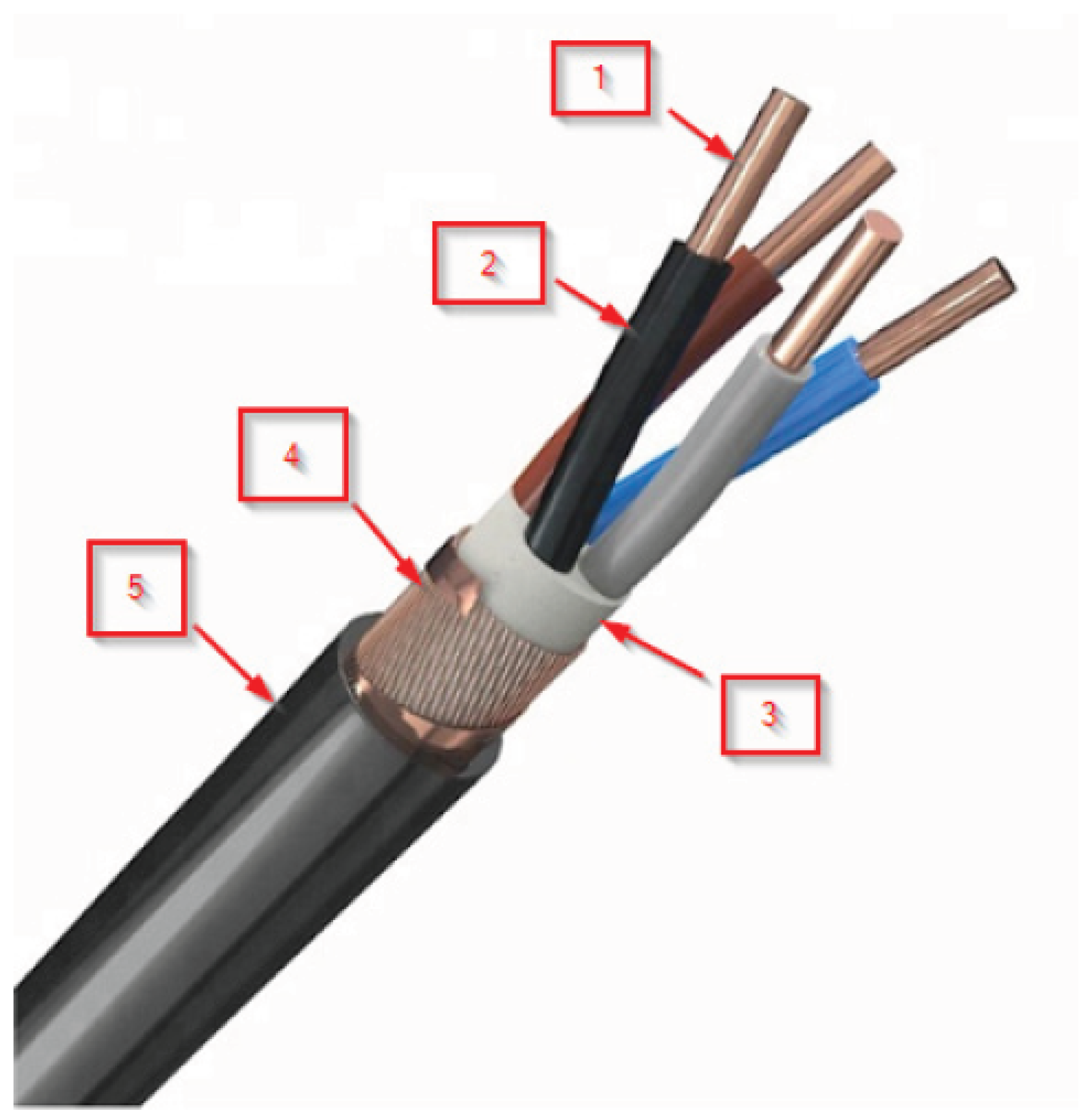

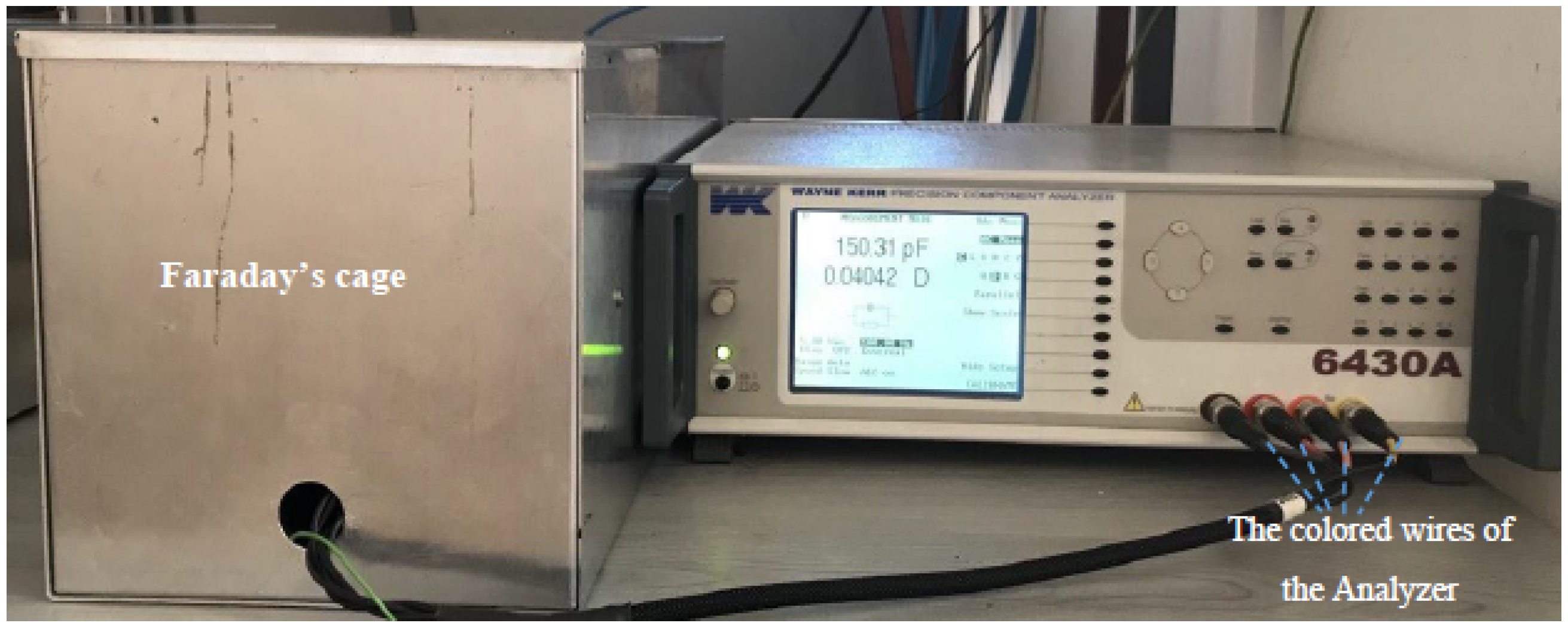


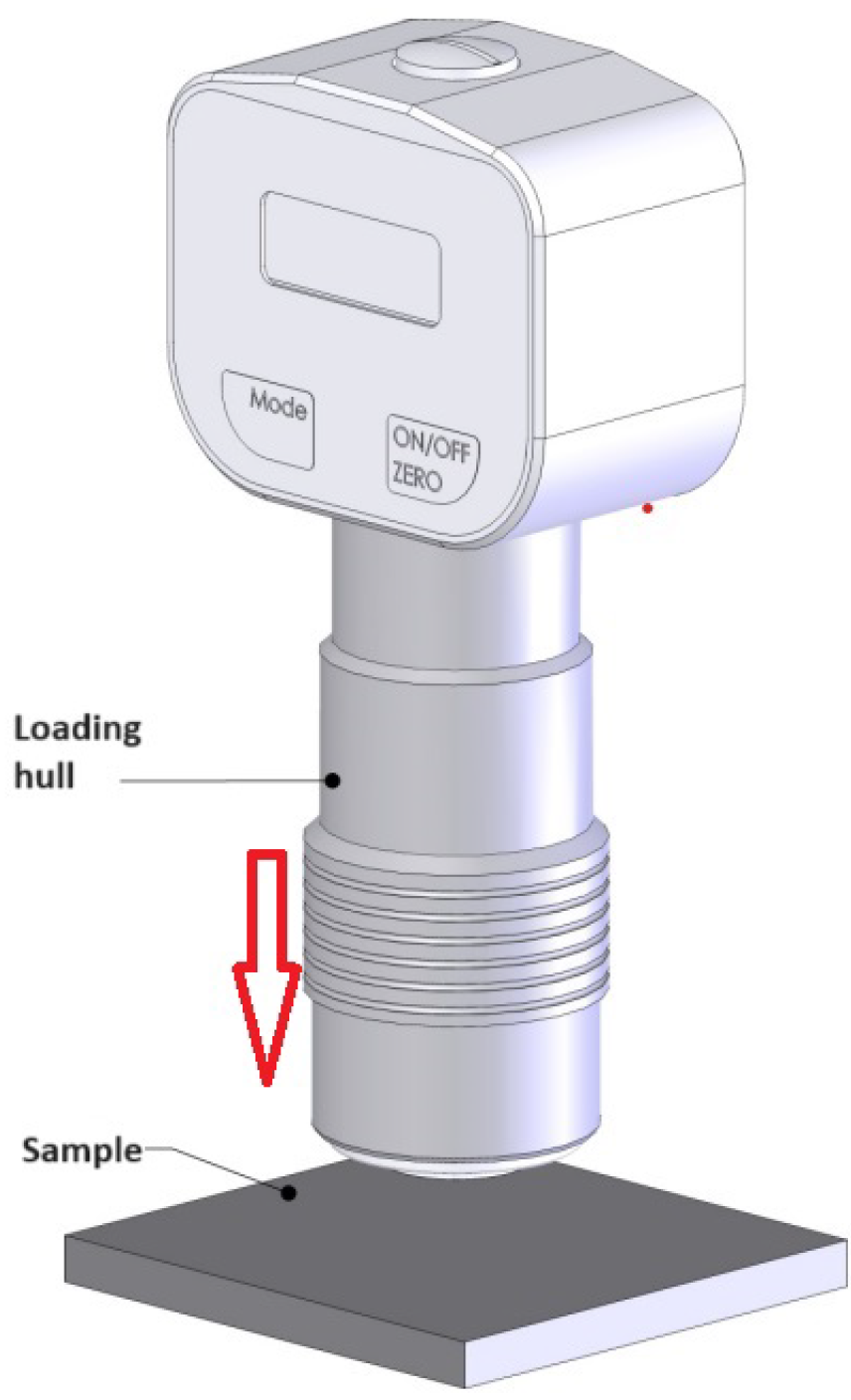
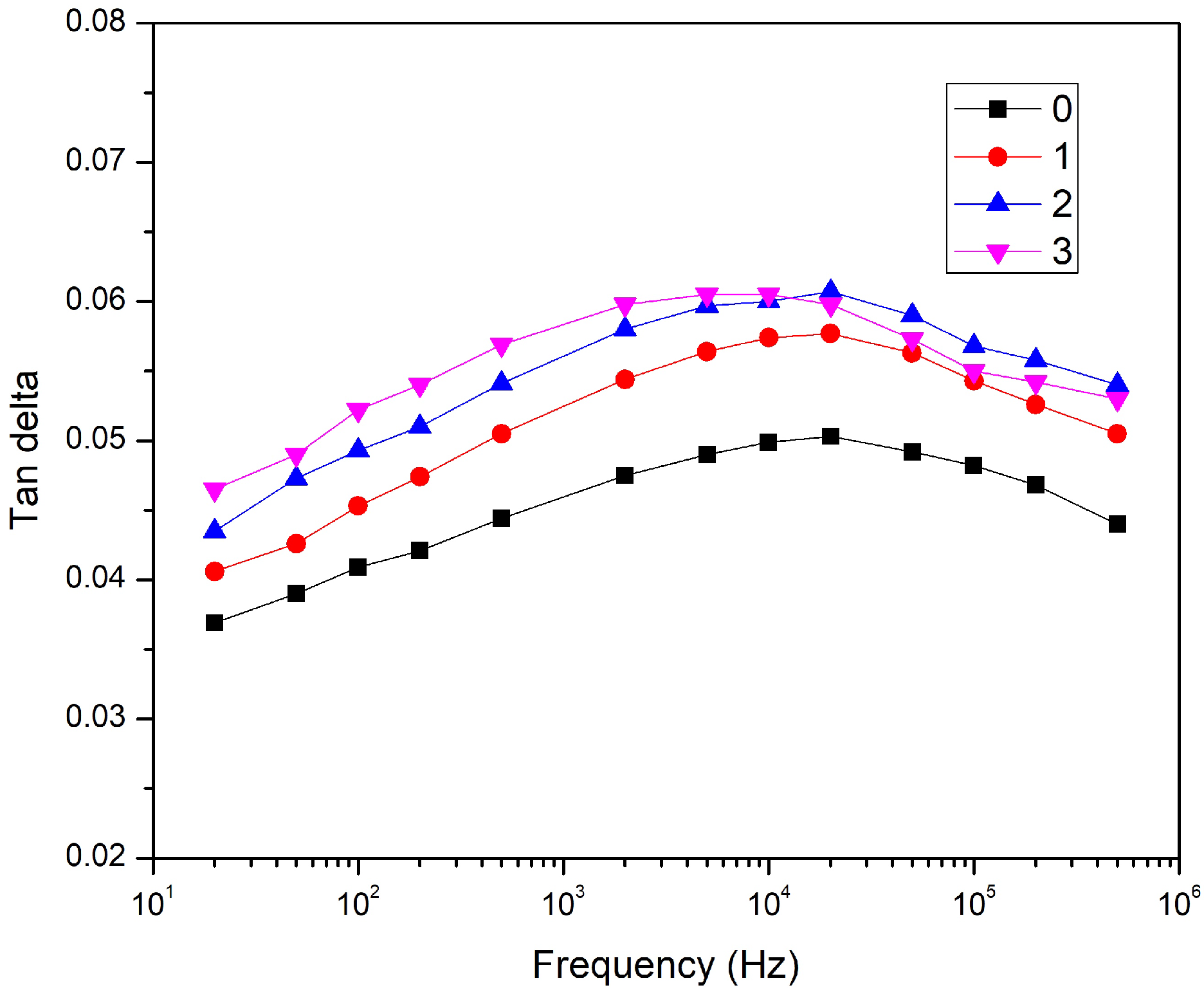

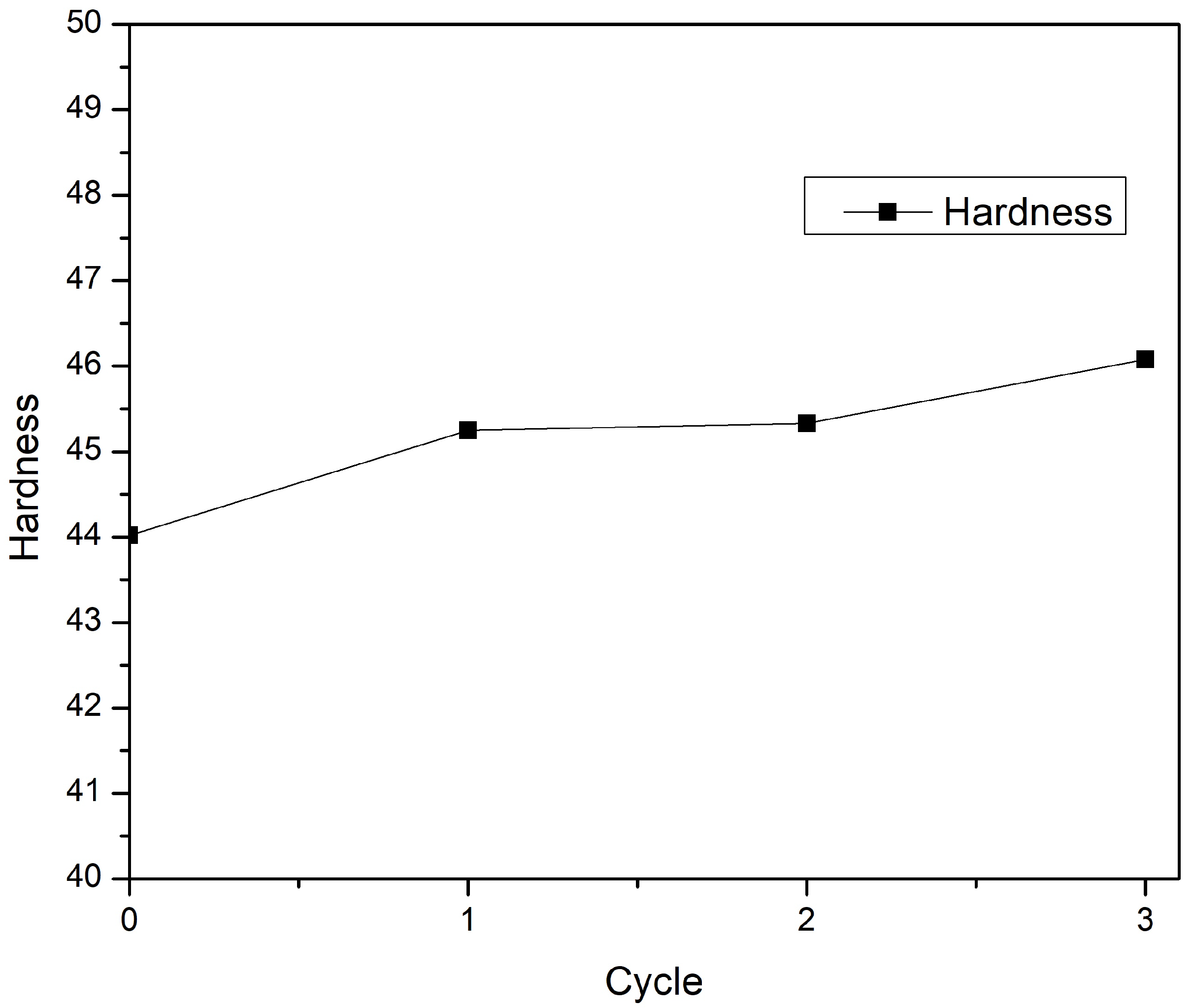

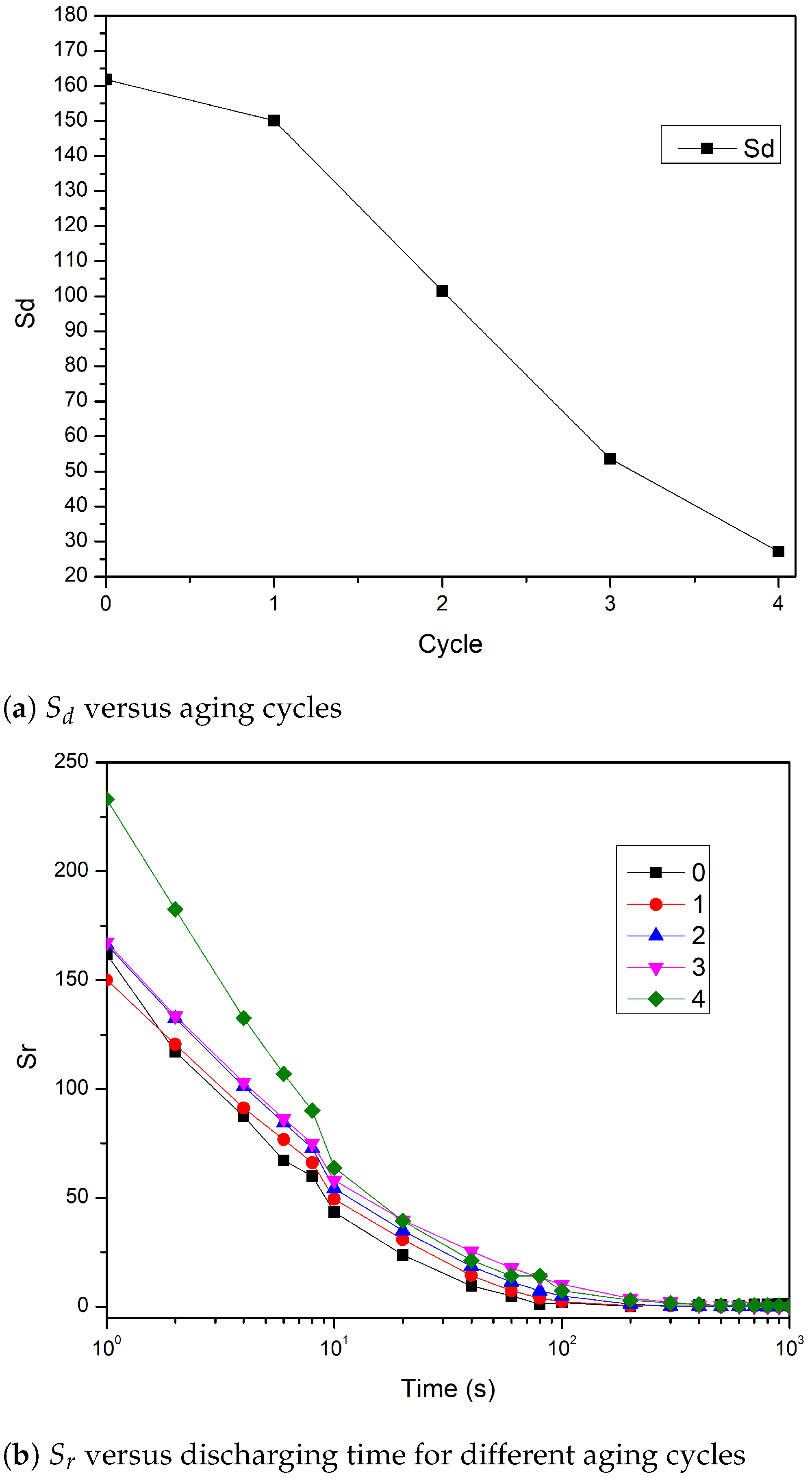
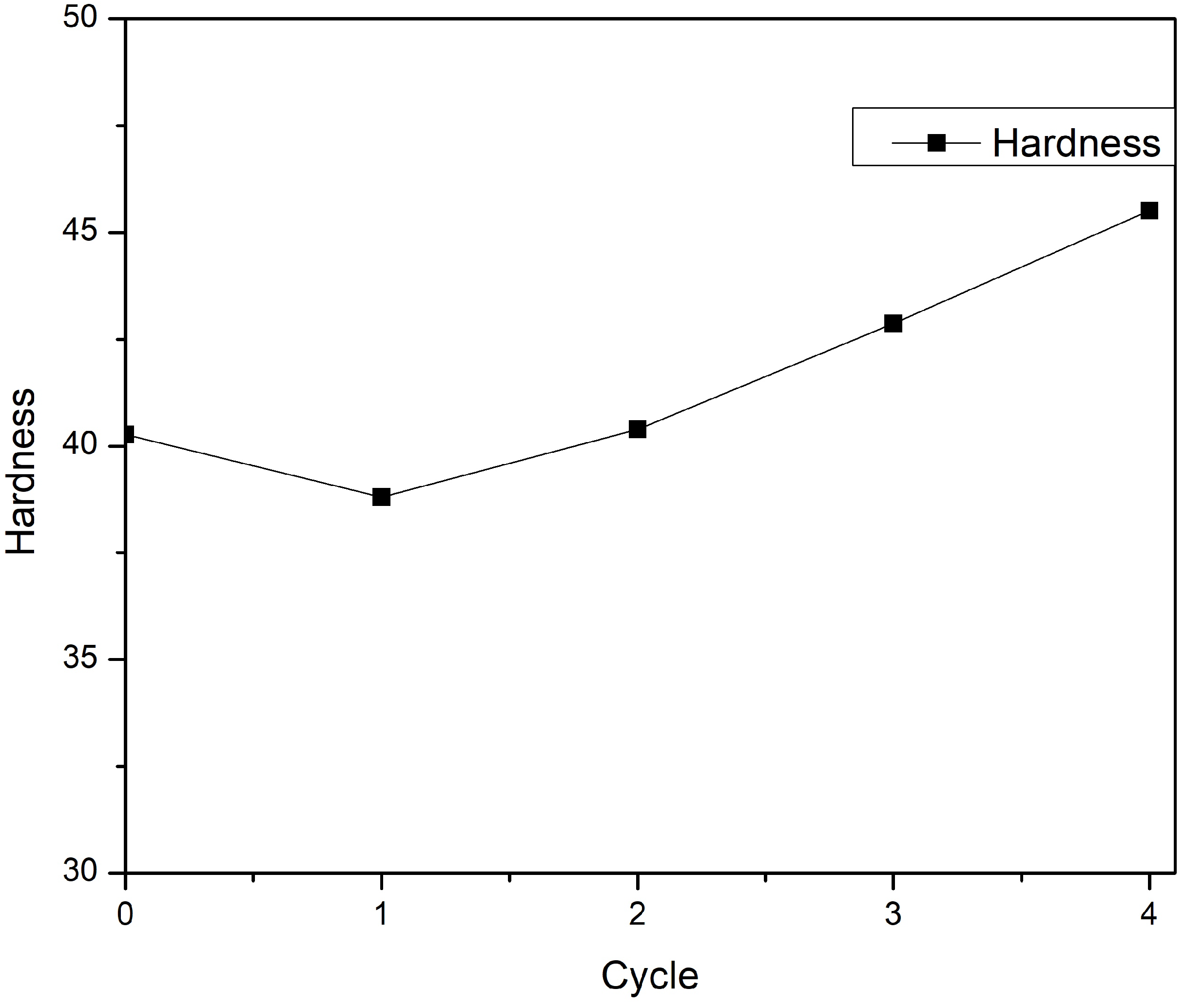


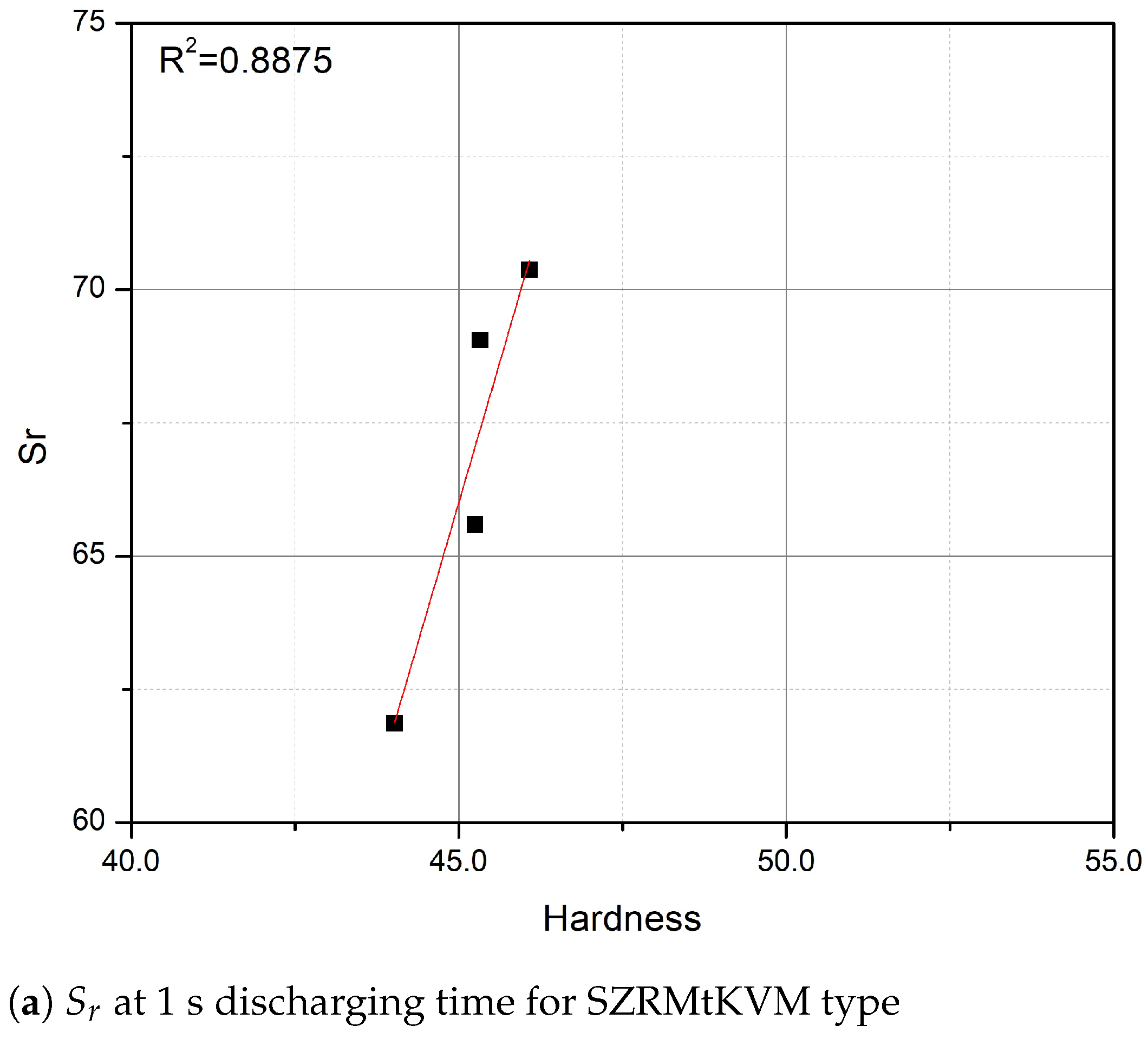

| SZRMtKVM | NYCWY | |
|---|---|---|
| Before | 61.856 | 161.806 |
| After | 70.369 | 233.09 |
| Ratio (After/Before) | 1.13 | 1.44 |
| SZRMtKVM | NYCWY | |
|---|---|---|
| Before | 44.02 | 40.27 |
| After | 46.08 | 45.52 |
| Ratio (After/Before) | 1.046 | 1.13 |
| Electrical Quantity | |||
|---|---|---|---|
| SZRMtKVM | NYCWY | ||
| 50 Hz | tan | 0.8493 | 0.5866 |
| 100 Hz | tan | 0.908 | 0.5974 |
| 2 kHz | tan | 0.9317 | 0.3648 |
| 5 kHz | tan | 0.9059 | 0.2488 |
| 500 kHz | tan | 0.8025 | 0.5374 |
| EVR | 0.7548 | 0.8367 | |
| 1 s | EVR | 0.8875 | 0.8289 |
Disclaimer/Publisher’s Note: The statements, opinions and data contained in all publications are solely those of the individual author(s) and contributor(s) and not of MDPI and/or the editor(s). MDPI and/or the editor(s) disclaim responsibility for any injury to people or property resulting from any ideas, methods, instructions or products referred to in the content. |
© 2024 by the authors. Licensee MDPI, Basel, Switzerland. This article is an open access article distributed under the terms and conditions of the Creative Commons Attribution (CC BY) license (https://creativecommons.org/licenses/by/4.0/).
Share and Cite
Bal, S.; Tamus, Z.Á. A Method for Assessing the Degradation of PVC-Insulated Low-Voltage Distribution Cables Exposed to Short-Term Cyclic Aging. Electronics 2024, 13, 1085. https://doi.org/10.3390/electronics13061085
Bal S, Tamus ZÁ. A Method for Assessing the Degradation of PVC-Insulated Low-Voltage Distribution Cables Exposed to Short-Term Cyclic Aging. Electronics. 2024; 13(6):1085. https://doi.org/10.3390/electronics13061085
Chicago/Turabian StyleBal, Semih, and Zoltán Ádám Tamus. 2024. "A Method for Assessing the Degradation of PVC-Insulated Low-Voltage Distribution Cables Exposed to Short-Term Cyclic Aging" Electronics 13, no. 6: 1085. https://doi.org/10.3390/electronics13061085







